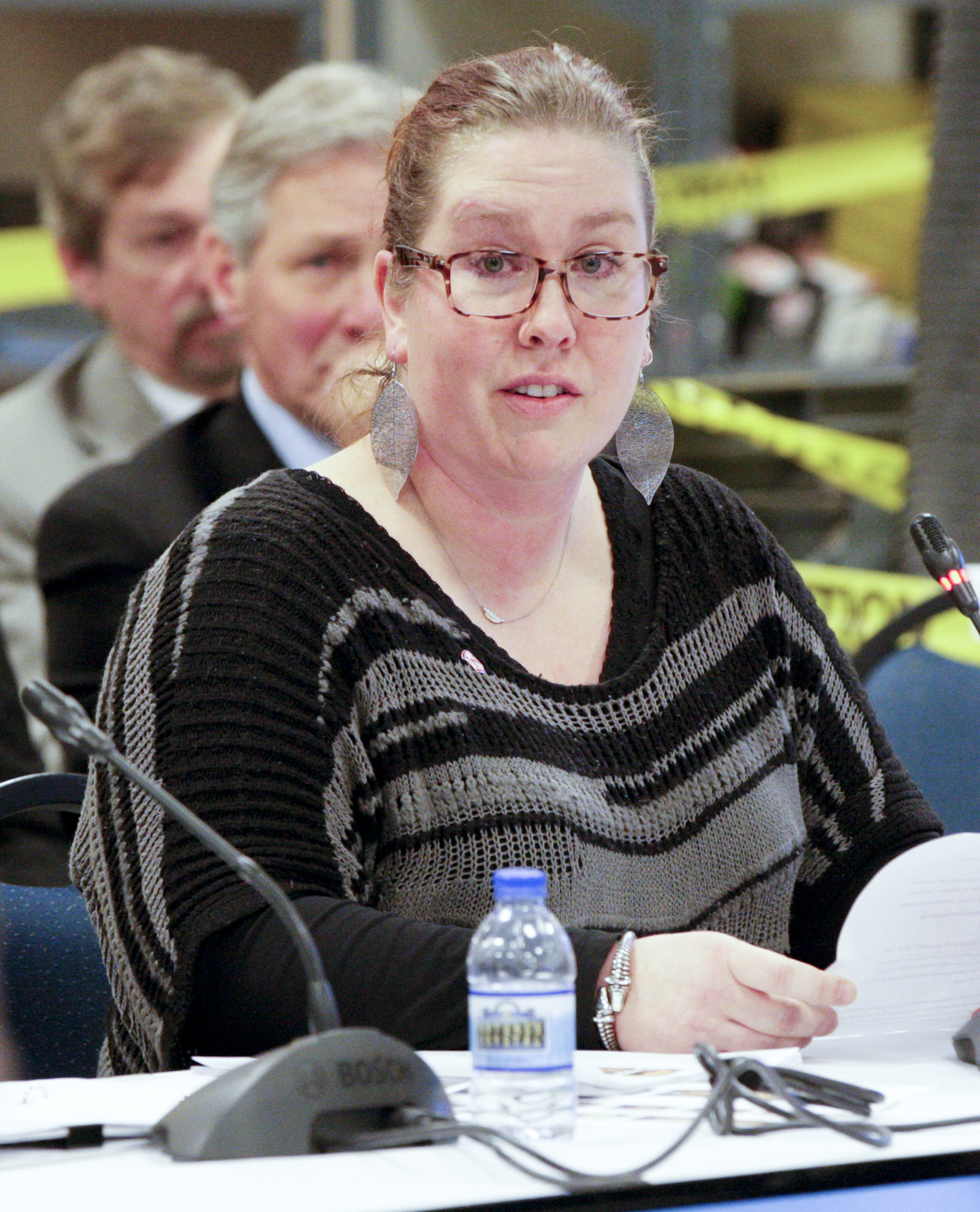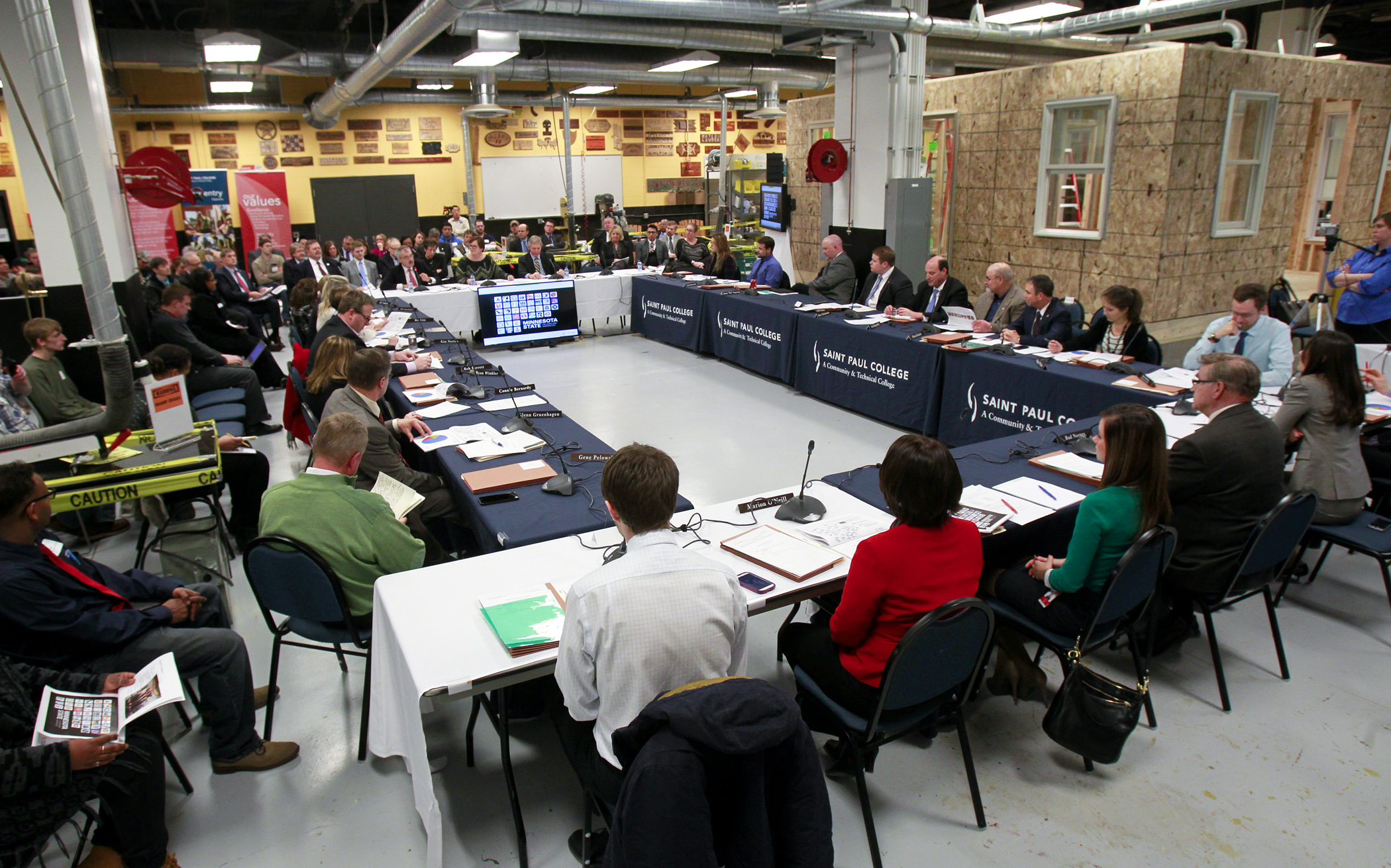U of M, MnSCU leaders discuss demographic challenges

Different higher education systems breed different sets of challenges.
That was the message as the House Higher Education Policy and Finance Committee heard from leaders of the University of Minnesota and Minnesota State College and Universities systems.
Both systems are expected to present details of their budget request to the committee later this session, but took time this week to update legislators on recent challenges they have encountered as Minnesota’s demographics begin to shift toward increasing diversity and retiring baby boomers.
Dean: more educated health professionals needed in Greater Minnesota
The University of Minnesota Medical School has one of the top-rated primary care models in the nation, according to a 2015 review published by U.S. News and World Report. That news comes as residents in Greater Minnesota are finding it increasingly difficult to access primary care physicians.
Earlier this month, the university unveiled its two-year budget request, which includes a $34.5 million to address current and future projected workforce shortages among medical professionals.
 Members of the House Higher Education Policy and Finance Committee hold a meeting at Saint Paul College Jan. 21 as Chancellor Steven Rosenstone gives an overview of the Minnesota State Colleges and Universities system. Photo by Paul Battaglia
Members of the House Higher Education Policy and Finance Committee hold a meeting at Saint Paul College Jan. 21 as Chancellor Steven Rosenstone gives an overview of the Minnesota State Colleges and Universities system. Photo by Paul BattagliaA shortage in primary care physicians in many rural areas across the state stems from a combination of factors, Brooks Jackson, the medical school dean, told the committee Tuesday.
An increase in tuition-based debt taken on by medical school students and insufficient loan reimbursement opportunities for primary care physicians are leading new doctors to choose more lucrative career paths, such as specialized medicine, Jackson said. That trend, compounded with an increasing number of people age 65 and older living in rural areas, has leaders in Minnesota’s academic health care education industry looking to partner with legislators to seek public policy-based solutions to address the shortage of health care access in Greater Minnesota.
“It’s a fact that primary care physicians are not compensated as well as specialists,” Jackson said. “With a reimbursement system that is based on face time with patients rather than their health care, our system does not really pay for wellness. … (Debt load) is clearly one of the reasons we don’t see as many physicians going into primary care, pediatrics or mental health, and instead choosing some of the higher paid specialties.”
Access to dental care has posed a challenge to many rural Minnesotans for the same reasons, said Rep. Kim Norton (DFL-Rochester).
“We are one of the lowest reimbursement rates in the country with regard to dental care,” Norton said.
“When reimbursement rates are low … they are not going to take the low-income patients because they can’t do that in their practice in order to make ends meet.”
MnSCU leaders: Time is now to prepare students for changing workforce demands
A demographic “tsunami” is on Minnesota’s doorstep and leaders of the Minnesota State Colleges and Universities system believe their schools hold the key to help the state’s economy and its workforce weather the storm. But it needs the Legislature’s help to ensure that access to its 23 community and technical colleges and seven four-year universities remains affordable.
MnSCU is expected to make its official budget request in the coming weeks, but the organization’s board of trustees, several of its campus presidents and Chancellor Steven Rosenstone used an opportunity Wednesday to open discussions with committee members about its successes and challenges.
Rosenstone pointed to MnSCU’s record on lowering administrative costs across its colleges and universities in recent years despite the fact that it is the fifth-largest public university system in the nation.
He added that MnSCU continues to make sure its students across the state are well positioned with practical career skills to help Minnesota transition from an anticipated retirement of 600,000 workers over the next decade.
The committee also had the chance to hear from a few MnSCU students, who stressed the importance that “affordability” had on their decisions to attend college.
Studying to become a registered nurse, Heather Christopher — a mother of six boys — said she enrolled at Normandale Community College in Bloomington because of its excellent reputation and low tuition compared to other nursing school opportunities outside the MnSCU system.
“I know that the only reason I have been able to stay in school at this point is because of the low cost and scholarship assistance I have received at Normandale,” she said.
Nearly 410,000 students are enrolled at MnSCU colleges and universities. About 38 percent of its students are 25 or older and 62,000 are American Indian or students of color, Rosenstone said.
Related Articles
Search Session Daily
Advanced Search OptionsPriority Dailies
Ways and Means Committee OKs proposed $512 million supplemental budget on party-line vote
By Mike Cook Meeting more needs or fiscal irresponsibility is one way to sum up the differences among the two parties on a supplemental spending package a year after a $72 billion state budg...
Meeting more needs or fiscal irresponsibility is one way to sum up the differences among the two parties on a supplemental spending package a year after a $72 billion state budg...
Minnesota’s projected budget surplus balloons to $3.7 billion, but fiscal pressure still looms
By Rob Hubbard Just as Minnesota has experienced a warmer winter than usual, so has the state’s budget outlook warmed over the past few months.
On Thursday, Minnesota Management and Budget...
Just as Minnesota has experienced a warmer winter than usual, so has the state’s budget outlook warmed over the past few months.
On Thursday, Minnesota Management and Budget...